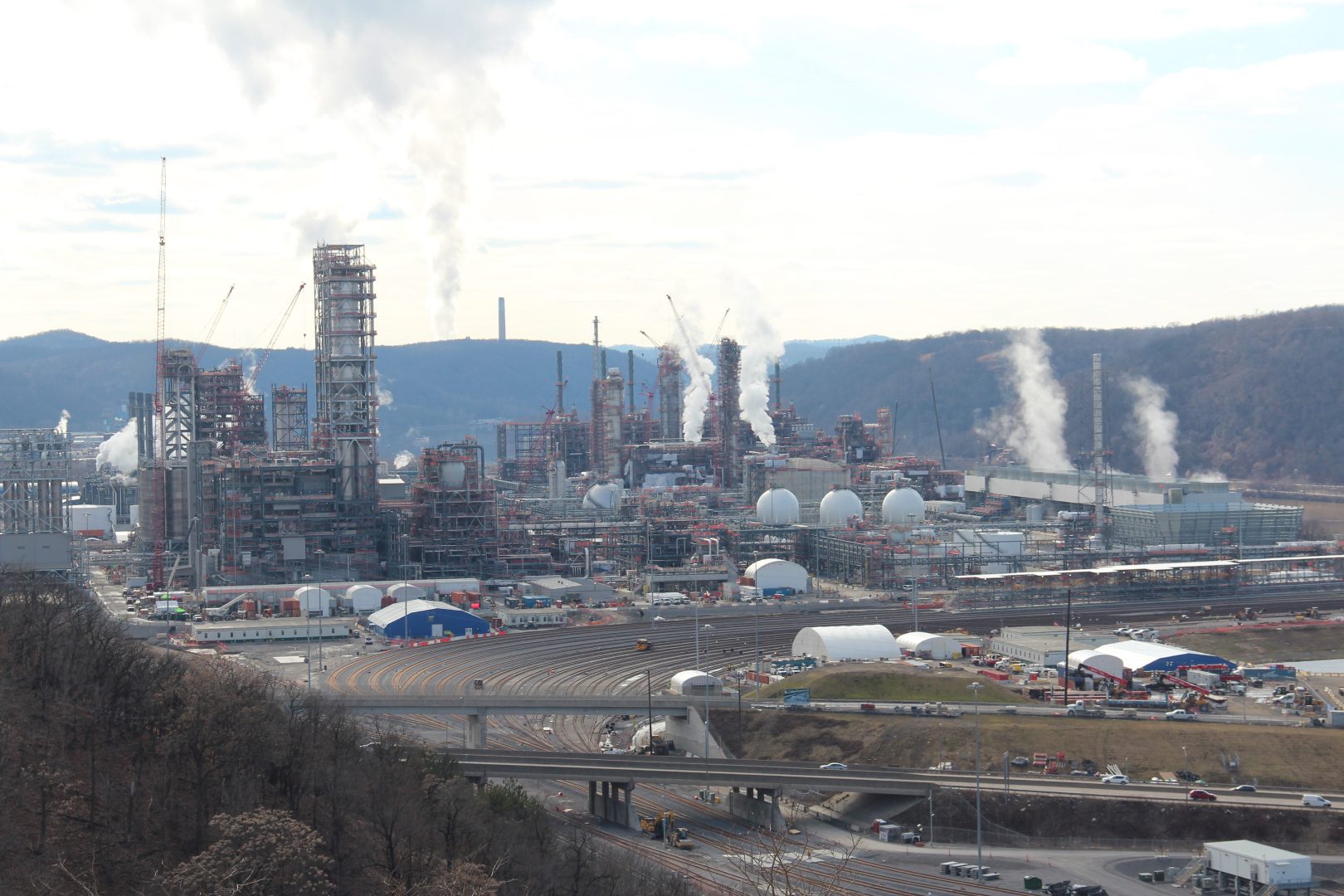A new report by the Trump administration suggests the Ohio Valley’s growing petrochemical industry could be an unprecedented source of economic opportunity and growth when the county, and region, eventually emerge from the COVID-19 pandemic. But the assessment is drawing criticism from environmental groups and some financial analysts that warn the risk is growing for plastics and petrochemical manufacturers.
The Department of Energy assessment released Tuesday makes the case that natural gas production in the region, which includes parts of West Virginia, Ohio, Pennsylvania and Kentucky, will continue to grow in the coming decades. The report argues the region is on the “cusp of an energy and petrochemical renaissance” due to the fact that gas extracted from the region is rich in natural gas liquids, including ethane, the building block of many plastics and chemicals, and the Ohio Valley’s proximity to the bulk of downstream manufacturers.
“The trifecta of potential growth in energy, petrochemical manufacturing, and other energy intensive and advanced manufacturing brings the promise of a renaissance to the Appalachian region,”the report states.
The 75-page document was commissioned under president Donald Trump’s April 2019 executive order “Promoting Energy Infrastructure and Economic Growth.” Six additional federal agencies and the Appalachian Regional Commission contributed.
Although the report recommends continued support and investment from federal, state and local governments, it places the onus on the private sector to lure new petrochemical and manufacturing plants. Private investment has been negatively affected by the pandemic’s economic effects.
The Trump administration has been a stalwart supporter of boosting the region’s petrochemical industry. The president toured Shell Chemical’s soon-to-be completed ethane cracker complex in Monaca, Pennsylvania, last August.
Officials in the region have been working on the so-called Appalachian Storage and Trading Hub for nearly a decade. The natural gas storage hub cleared its first major hurdle in 2018 when it got approval for the first of two phases for a $1.9 billion U.S. Department of Energy loan. A previous DOE report, requested by lawmakers in Congress, found the hub is crucial for growing the region’s petrochemical industry.
Financial Risk
Sarah Carballo, a communications specialist with the Ohio Valley Environmental Coalition, a regional advocacy group, said the new DOE report did not take into account the growing financial risk associated with a regional petrochemical industry buildout, or the concerns of some residents in the region.
“Communities across Appalachia deserve viable, fair and sustainable economic transition strategies that protect public health and environmental quality,” she said. “So, instead of investing in petrochemicals and coal as a basis for economic renaissance — industries that poisoned our land, air, water, communities — we think it’s time for our leaders to explore more feasible and sustainable economic development strategies that provide long term prosperity for the people of our region.”
An analysis released last month by the Institute for Energy Economics and Financial Analysis (IEEFA), a think tank whose mission is to accelerate the transition to a diverse and sustainable energy economy, painted a much less rosy picture for the Ohio Valley’s budding petrochemical industry.
The report focused on Shell’s petrochemical complex currently under construction near Pittsburgh in Beaver County. Once completed, the facility will include an ethane cracker and polyethylene production complex slated to produce 1.6 million tons of ethylene each year and permanently employ about 600 workers, according to the company.
The IEEFA analysis found changing market conditions, exacerbated further by the coronavirus pandemic, call into question the economic viability of Shell’s cracker plant and other investments in the Ohio Valley. For example, the prices of plastics have dropped from around $1 per pound from 2012-2016 to roughly half that today.
On Wednesday, IEEFA’s director of finance, Tom Sanzillo, said recent disclosures by Thailand-based PTT Global Chemical America regarding its proposed petrochemical plant planned in Belmont County, Ohio, show that the project is also facing similar financial risks.
State officials in Ohio have provided millions of dollars in grants and other economic incentives to the facility, which was first proposed in 2013. In a recent press release, the company pushed back its final investment decision by six to nine months.
